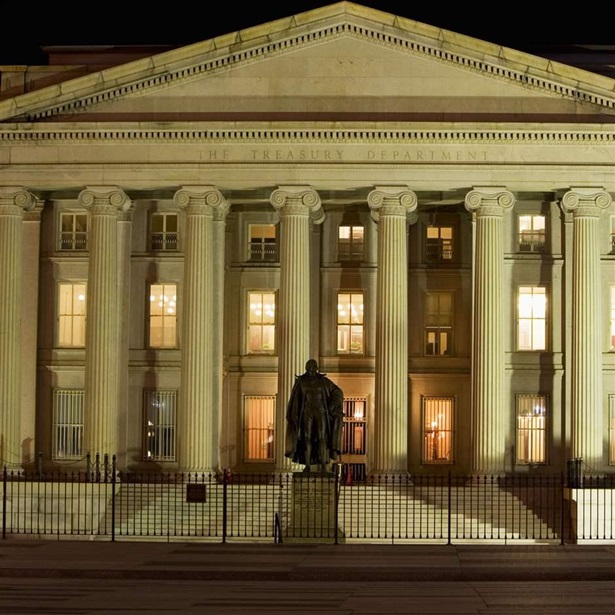States Can Use Federal Stimulus to Safeguard Fiscal Health, Expand Broadband Access
Webinar speakers discuss ways to effectively spend American Rescue Plan Act funds
The American Rescue Plan Act (ARPA) is sending billions of dollars to state and local governments to support public health services, replace lost revenue, and stabilize economies. ARPA’s Coronavirus State and Local Fiscal Recovery Funds will deliver $350 billion to states and local governments and offer states flexibility in deciding how to allocate these resources.
In a webinar hosted by The Pew Charitable Trusts on May 25, experts discussed how states can manage the recovery funds to strengthen their long-term fiscal health and invest in needed infrastructure improvements, such as expanding broadband access.
Mitigating risk and planning long term
Policy priorities will differ from state to state, said Adam Levin, a principal associate for Pew’s state fiscal health initiative, who advised that states take a long-term view of federal funds.
Levin pointed to the federal stimulus funds that followed the last recession, the American Recovery and Reinvestment Act of 2009, which also channeled significant federal funding to state and local governments. After the Great Recession, however, some states faced budget shortfalls and spending cuts when stimulus funds expired, which slowed their economic recovery.
To avoid this situation—known as the “fiscal cliff”—policymakers should have a multiyear perspective on state budgets. “What lawmakers should do is analyze revenue and expenditures over the long term, and plan for a range of post-ARPA scenarios,” said Levin.
Pew experts on the panel recommended against using federal funds for ongoing programs, focusing instead on one-time expenses or programs experiencing a temporary increase in demand because of the pandemic, such as Medicaid, which could abate as the economy strengthens.
ARPA funds also can be used to invest in economic development, Pew panelists told the online attendees. When looking to prop up state economies, Levin recommended targeting distressed areas and sectors that have been hard hit, such as tourism or hospitality, with short-term, immediate support. Such a strategy can be more cost-effective and avoid the fiscal risk of using federal funds for recurring programs. Abiding by these broad principles also can help to mitigate the risk of a “fiscal cliff” when ARPA funds dry up.
Despite the risks, Levin emphasized that states will receive a sizable one-time influx of funds, which represents a significant opportunity. Many states have already released plans outlining how they plan to use ARPA money: Florida policymakers, for example, have said that they want to provide bonuses to first responders, invest in school construction, and support a tourism industry that suffered because of the pandemic. Kentucky officials, in comparison, have announced plans to repay unemployment insurance loans and invest in expanding broadband access.
Investing in broadband
Kentucky is not alone in focusing on broadband infrastructure. As of May, nearly 40 governors had announced broadband initiatives in their State of the State addresses. Wisconsin Governor Tony Evers (D) declared that 2021 would be “the Year of Broadband Access,” while Texas Governor Greg Abbott (R) said that expanding broadband access would be an “emergency item this session.”
ARPA funds can help state leaders make progress on these goals. In addition to Coronavirus State and Local Fiscal Recovery Funds, ARPA includes the Capital Projects Fund, which will be administered by the Treasury Department, whose officials have stated a preference that states use the $10 billion specifically for broadband expansion.
During the webinar, Kathryn de Wit, project director for Pew’s broadband access initiative, said that Treasury has outlined guidelines for using these funds for broadband, including connecting communities lacking reliable access to high-speed internet and funding projects that would deliver reliable service at 100 megabits per second (Mbps); states also intend to use ARPA funds to support projects that provide last mile connections, build accountability into broadband business models, and support networks owned, operated by, or affiliated with local governments, nonprofits, or cooperatives.
These requirements echo principles identified in Pew research about how state policies can help expand broadband deployment. Policymakers should focus on ensuring adequate capacity to manage projects, invest in planning, and use competitive grant programs to ensure the success of expansion programs.
With those principles in mind, de Wit encouraged state lawmakers to prepare for federal funds by assessing broadband needs in their communities, setting statewide broadband goals and an actionable plan, and investing in availability and affordability so they are ready to apply stimulus resources as soon as they’re received.
The ARPA funds present a significant opportunity for state leaders. Stimulus money can be used to strengthen state fiscal health and invest in long-term infrastructure, such as broadband. States can prepare to receive—and allocate—the federal funds by creating forward-looking investment plans and by taking a long-term perspective on revenue and expenses. By acting responsibly now, policymakers can ensure that they make the most of this opportunity.
Robert Zahradnik is a principal officer with the government performance portfolio at The Pew Charitable Trusts.
















